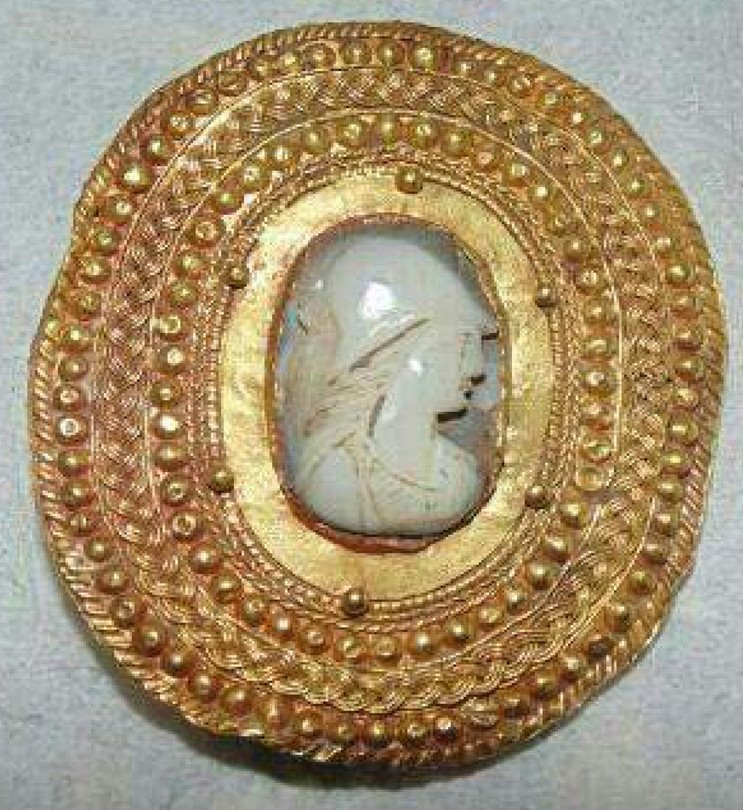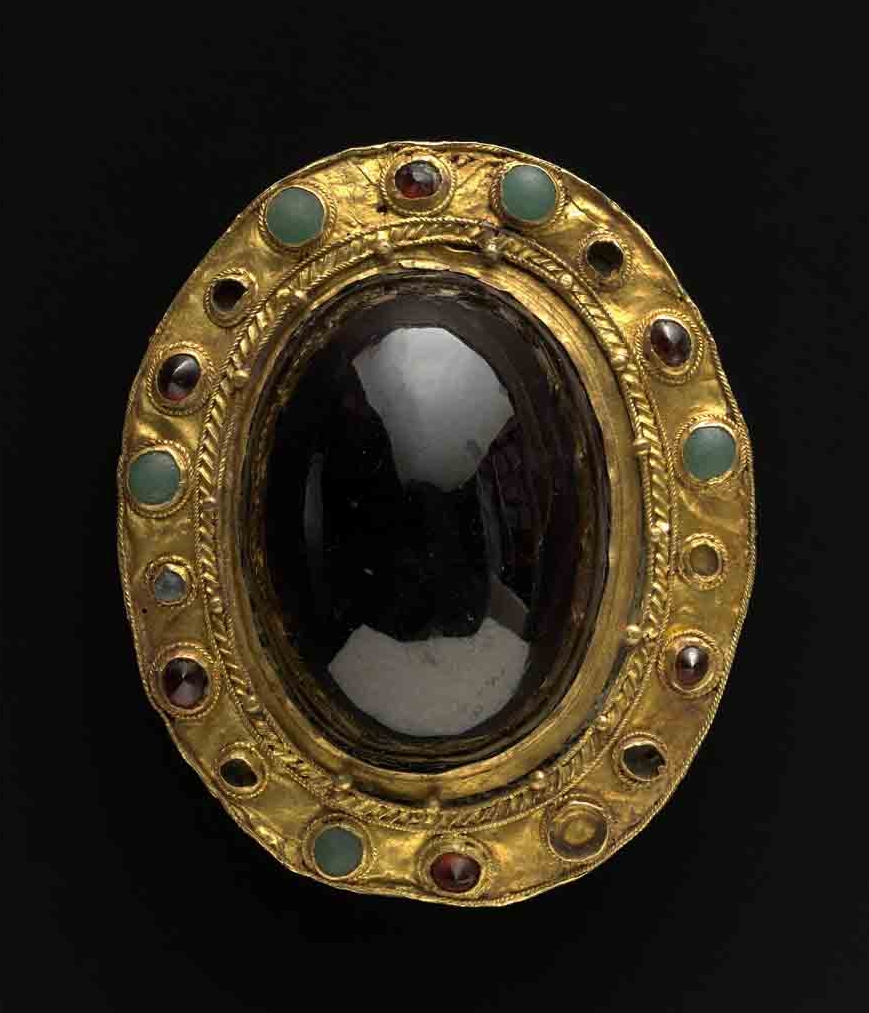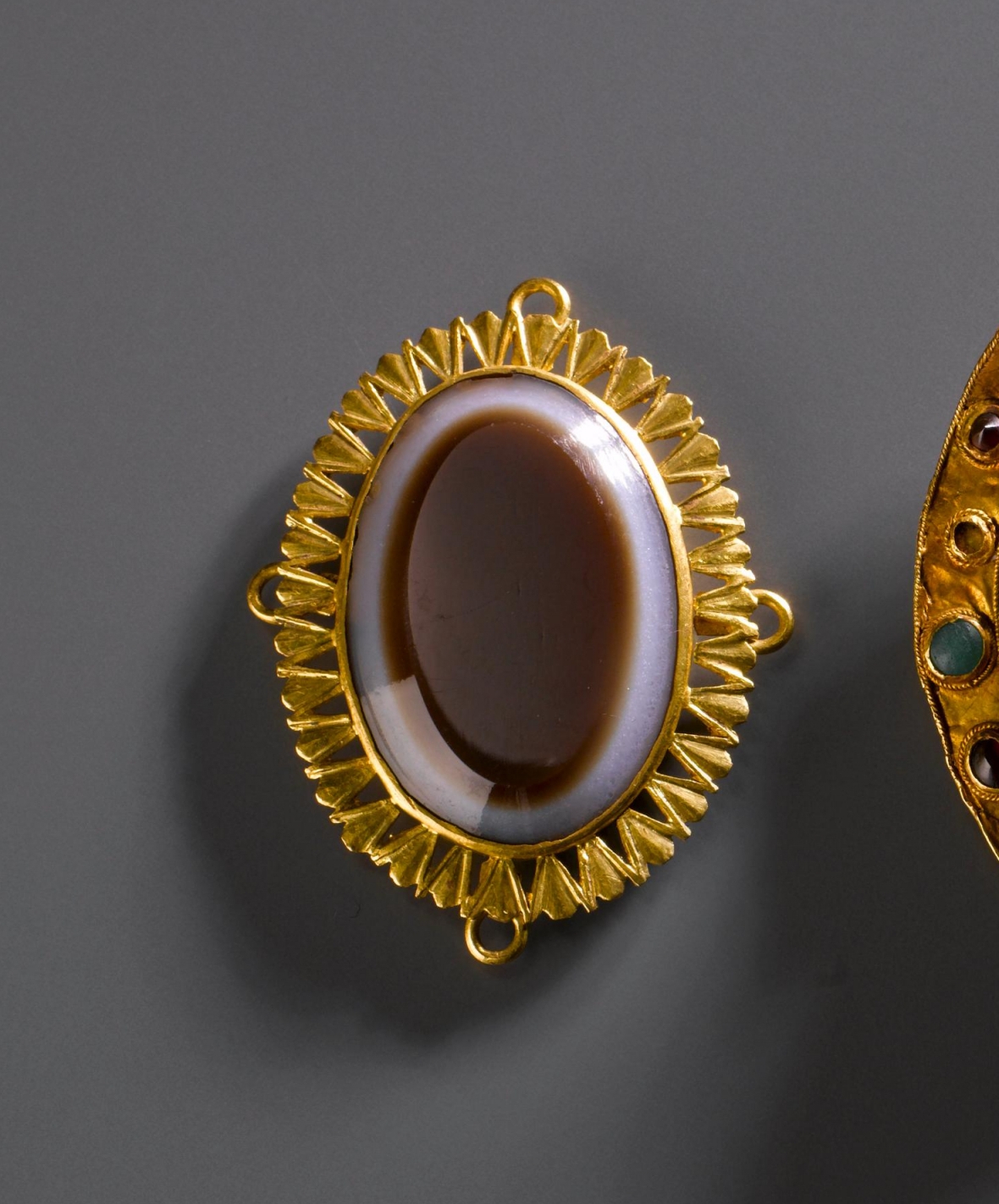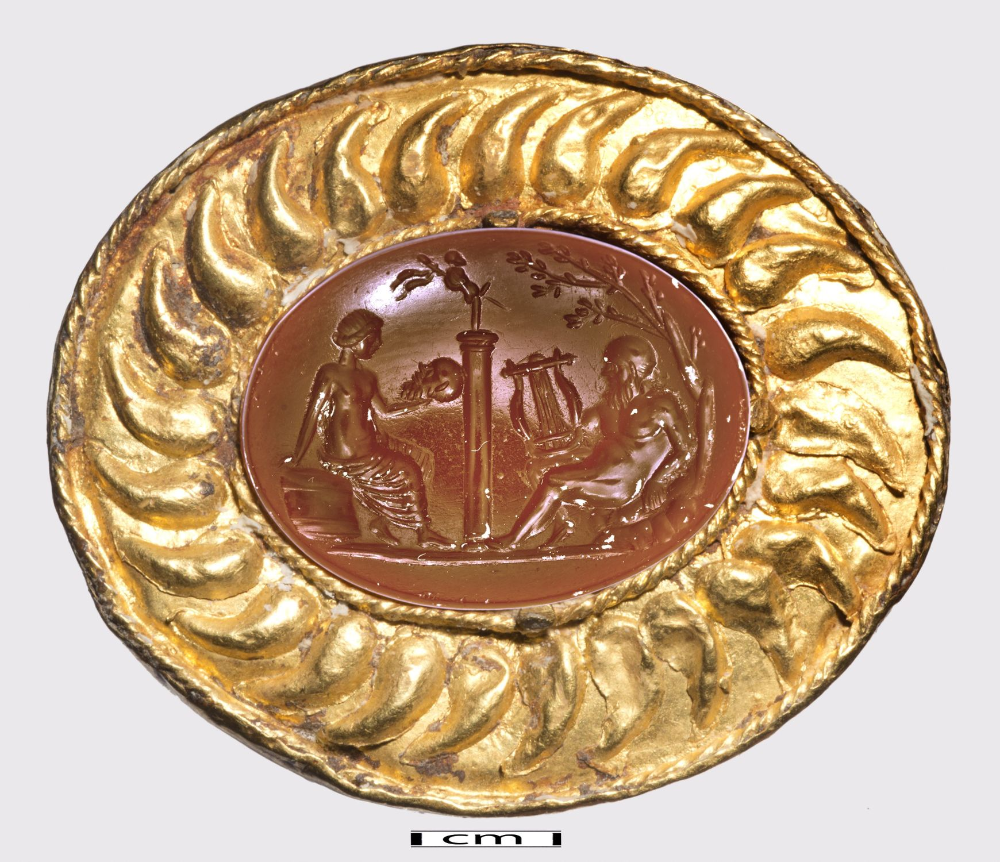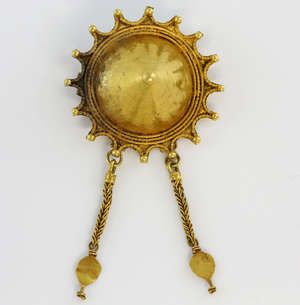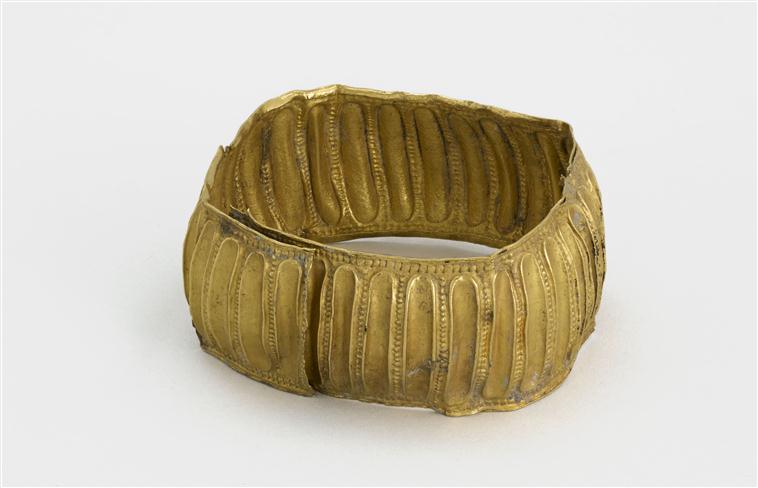
After Renate Rosenthal-Heginbottom, Schmuck aus dem Reich der Nabatäer

Gold brooch from Khisfin [Khasfin], Syria, southern Golan Heights, cemetery, grave 15
Diameter 5,5 cm, Length with pendants 11,8 cm
“The fibula is divided into a disc (diameter 5.5 cm), which consists of a humpback shield with rows of wire attached to the outer edge, surrounded by fourteen moon-shaped open rings with granulation balls, as well as three link chains with lancet-shaped end pieces made of sheet gold. The border of the shield is reminiscent of the lunula with hollow spheres at the ends of the lunar horns and a third at the upper edge.
As a comparison, a few brooches from the art trade have been preserved in which the pendants are missing or were not present, as shown by the round brooches on Nabataean reliefs, e.g. the depiction of Victoria at the temple of Khirbet edh-Dharih with two brooches and the animal sign Cancer with one brooch. K. Parlasca dates the brooch to the 1st – 2nd centuries AD. On the grave reliefs from Palmyra, round brooches with richly decorated edges and three pendant chains ending in heart-shaped or lancet-shaped leaves are depicted from the late 2nd century onwards. A dating to the late Roman-Byzantine period, as T. Hackens suggests, is unlikely, as is the even later early Islamic date that B. Segall assumes for an earring from the Benaki Collection. This has four link chains with lancet-shaped end pieces; the three remaining intact chains have glass beads. Link chains of this type can be found on single earrings found in the National Museum of Damascus; There are four to six link chains. The lanceolate leaves are present on several specimens, the remaining examples end with knots at the lower end of the wire or with an eyelet as in the find from Khirbet edh-Dharih. Forerunners of Roman link chains can be found on Hellenistic earrings.”
[Renate Rosenthal-Heginbottom, Schmuck aus dem Reich der Nabatäer. Hellenistische Traditionen in frührömischer Zeit
https://archaeopresspublishing.com]

